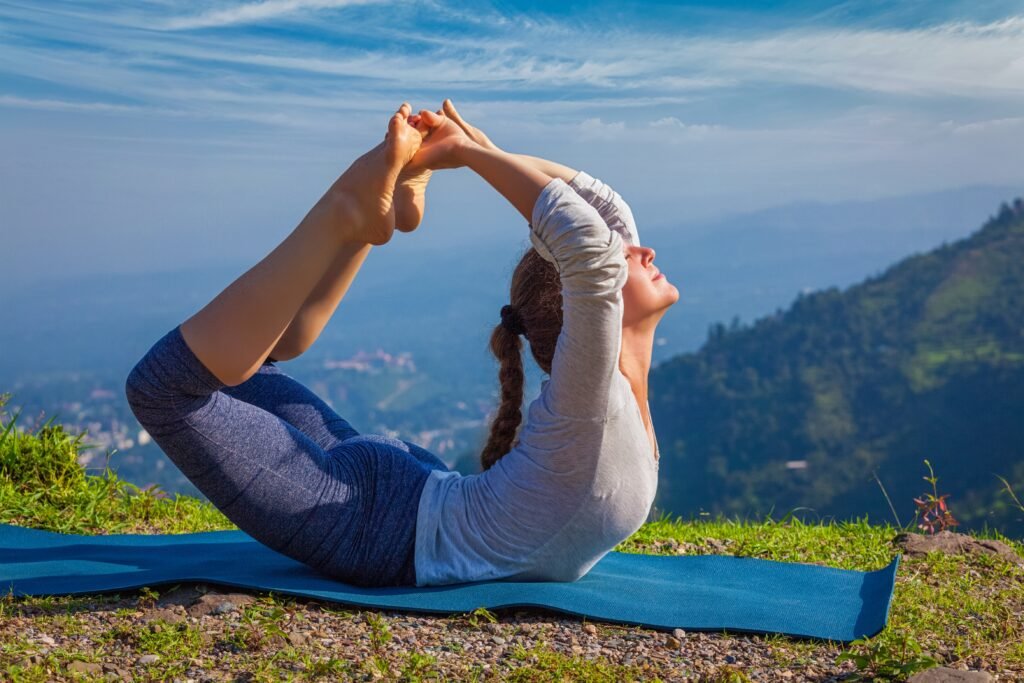If yoga styles were people at a dinner party, Ashtanga would be that charismatic guest who somehow knows everyone’s name, tells the most riveting stories, and somehow convinces you to try a headstand before dessert. Structured yet energizing, ancient yet perfectly suited for modern life, Ashtanga yoga has been shaping bodies, calming minds, and challenging egos for decades. But where did this dynamic practice come from, why is it so addictive, and what exactly makes it more than “just another yoga class”? Let’s roll out the mat of history and see.
The Roots: From Ancient Texts to Modern Mats
Ashtanga yoga, in its modern physical form, is credited to Sri K. Pattabhi Jois, who began teaching it in Mysore, India, in the mid-20th century. But the philosophy behind it stretches back centuries.
The name “Ashtanga” means “Eight Limbs” in Sanskrit, referring to the eight-fold path outlined by the sage Patanjali in the Yoga Sutras. These eight limbs—ranging from ethical principles (yamas) to meditation (dhyana)—were intended as a holistic guide to living and spiritual growth.
Jois’s Ashtanga method took inspiration from this philosophy and paired it with a systematic series of postures (asanas) linked by breath and movement (vinyasa). He reportedly learned this sequence from his teacher, Tirumalai Krishnamacharya, who was something of a yoga renaissance man in the early 1900s.
By the 1970s, Ashtanga had caught the attention of adventurous Western seekers traveling to India. Soon, it made its way to Europe, the U.S., and beyond—bringing with it both the discipline of a structured sequence and the sweat of a vigorous workout.
The Practice: What Makes Ashtanga, Ashtanga
Unlike many modern yoga styles that switch up postures from class to class, Ashtanga follows a set sequence of poses performed in the same order every time. There are six series in total—Primary, Intermediate, and four Advanced series—but most students spend years (and often a lifetime) refining the Primary Series before moving on.
Here’s the Ashtanga recipe:
- Breath (Ujjayi pranayama): Deep, steady breathing to build heat and focus.
- Drishti: Specific gaze points for each posture to train concentration.
- Bandhas: Subtle “locks” in the body that help channel energy and stabilize movement.
- Vinyasa: Flowing transitions that link every posture to the next.
The result? A practice that feels meditative yet physically demanding, grounding yet uplifting—like moving meditation on turbo mode.
Benefits: Why People Keep Coming Back
1. Strength & Flexibility
The repetition of the Ashtanga series means your muscles get progressively stronger while your flexibility expands, like a daily “body upgrade.”
2. Mental Clarity
Memorizing the sequence and focusing on breath and gaze keeps the mind anchored, reducing the mental chatter that often creeps in during other workouts.
3. Discipline & Consistency
Because the sequence doesn’t change, it’s easier to measure progress and stay committed. It’s a bit like brushing your teeth—you just do it every day.
4. Detox & Circulation
The heat generated by Ujjayi breath and vinyasa movement helps purify the body through sweat, while also improving circulation.
5. Holistic Growth
Ashtanga is not just about the physical. The eight limbs encourage ethical living, self-study, and mindfulness, making it as much a lifestyle as a workout.
Inclusion: Yes, You Can Do It
Despite its reputation for being intense, Ashtanga is not just for the ultra-fit or hyper-flexible. Traditionally, the practice is taught “Mysore style,” where students work at their own pace under the guidance of a teacher, receiving personalized adjustments. That means you can start with what you can do today—whether that’s a perfect Chaturanga or just touching your toes—and build from there.
Final Flow
Ashtanga yoga is the ultimate blend of tradition and transformation—a practice with deep historical roots that still feels fresh every time you step on the mat. Whether you’re seeking strength, mental focus, or a moving meditation that will challenge you for years to come, Ashtanga offers a clear path.
So maybe it’s time to channel your inner dinner party guest, show up on the mat with curiosity, and see where the flow takes you.






Leave a Reply